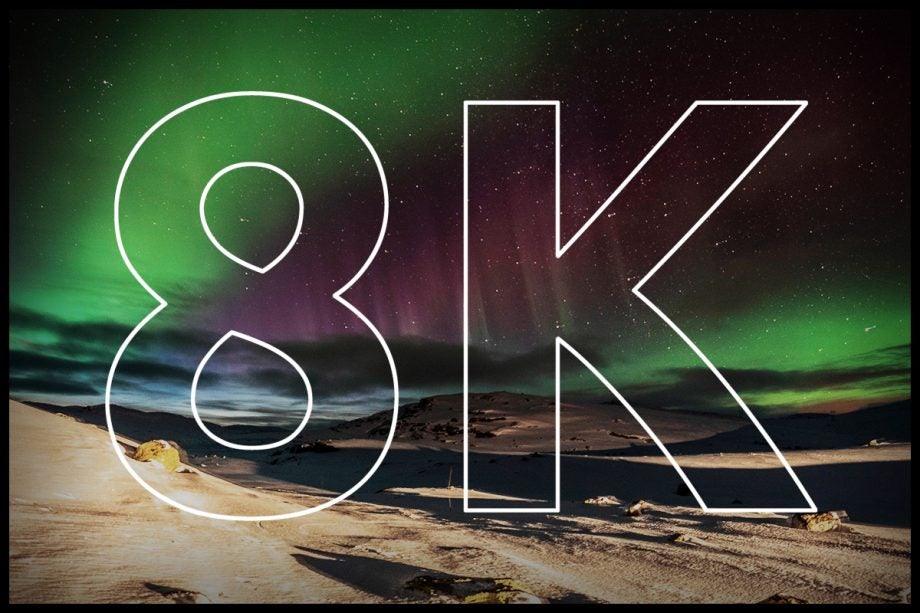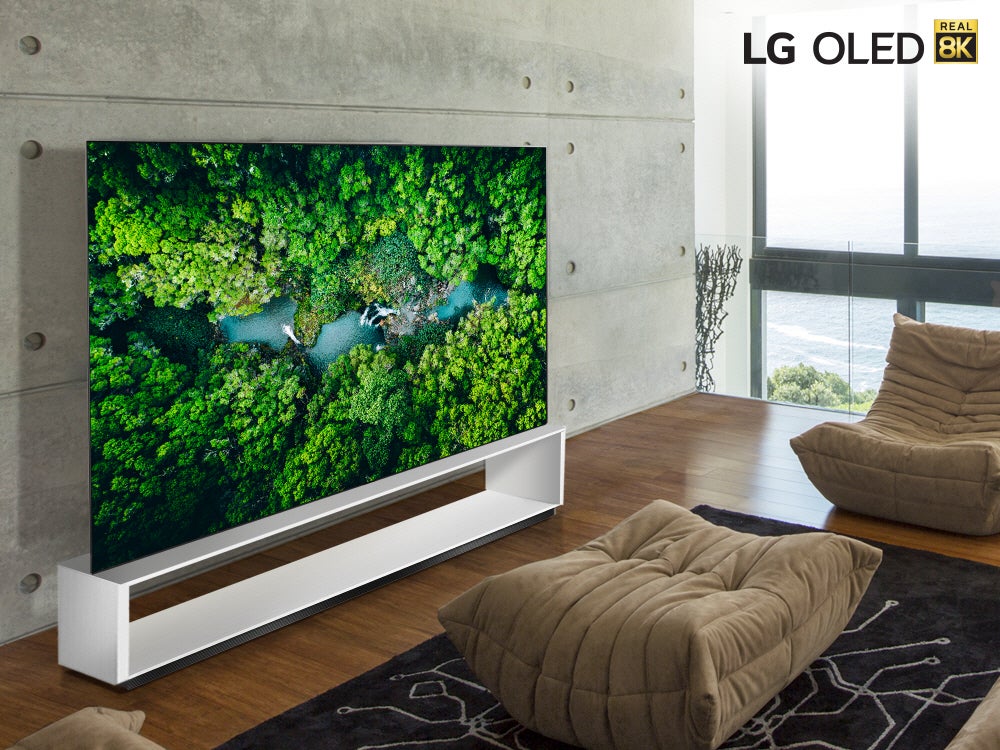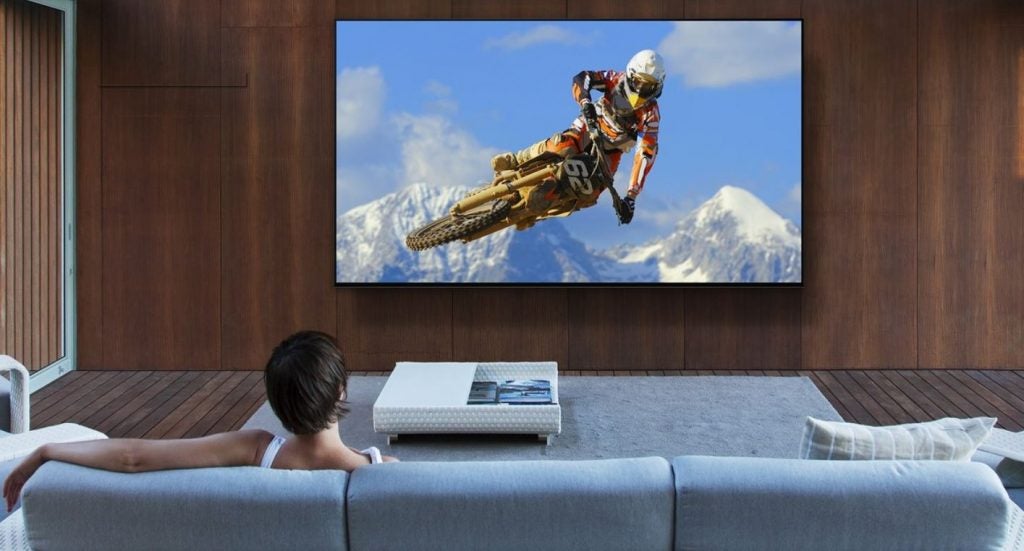Should you buy an 8K TV?

There’s been a lot of noise being made about 8K TVs in the past few years and the scope of the market is definitely about to heat up in 2020. More and more brands are set to unveil and launch their very own models off the marvelled 8K TVs, with more choice in size to boot.
Alongside feuding LG and Samsung in their embarrassing ‘real’ 8K spat, the likes of Sony are fine-tuning their 8K models and, for the average consumer, this will hopefully mean models are a touch more accessible in price, too – but let’s not get ahead of ourselves.
Whether or not you’ve got a spare £15,000 lying around, there’s still a lot more than the price of 8K TVs up for debate. Determining whether they’re worth the investment might be tricky, then, especially if you pride yourself on having the very latest technology. That, and the very best in terms of visual experience is at the top of your priorities.
Thankfully we’ve compiled some of the pros and cons to 8K TVs that might very well help you come a little bit closer to your final decision on whether or not you should buy an 8K TV.
[videoai]Pro: 8K resolution is undeniably magnificent
You can’t deny science – or maths for that matter, and the figures really do speak for themselves if you haven’t had the pleasure of viewing an 8K TV in all its glory as of yet. At 8K you’re getting four times the resolution of 4K, meaning even more pixels packed into the display – 7680 pixels by 4320 pixels, to be exact. This, of course, translates into a greater, more detailed picture.
In our breakdown of all things 8K, we said: “For the naysayers doubting whether those extra pixels will be worth it, we’ve seen it up close and it does make a dramatic difference to the quality of the picture.” You heard it here first.
Con: Native content is severely lacking
Great, you’ve got an 8K TV – but what are you going to watch on it? As it goes, there isn’t a whole lot, if any, native 8K content out there as of yet, although you will be able to enjoy the Tokyo 2020 Olympics in 8K if you purchase a TV in time. Still, the lack of native content could be seen as a little off-putting, especially when you’ve dropped so much cash for the set-up.
In a chicken and egg situation, however, until people have something to watch native 8K content on, there is no demand for films and TV shows to be filmed to fill these big 8K boots. Much like when 4K launched onto the scene, though, the content will come with time with all the capabilities to produce films in 8K already readily available and, in some instances, happening. It’s also worth noting that with AI technologies, 8K upscaling will be possible in order to execute the highest res picture possible.

LG’s Signature OLD 8K TV looks great, but is now the right time to get one?
Pro: More affordable models are coming
Manufacturers wants to show their hand in terms of what its TVs can offer in the way of 8K, meaning we’re about to see even more of them on the market. Much like when 4K gained more of a presence with the average Joe, models became more moderately priced and made in such a way to adhere to demand.
Really, 8K simply needs to become more commonplace and developed, allowing manufacturers to build them more cost effectively.
Point and case: initial 8K TVs were sitting at 80-inches and above, but as time has gone on we’re seeing 8K TVs at more realistic sizes for the household with Samsung’s 65-inch models now available.
Con: Size variations are huge
In this instance, we hate to say it, but bigger is definitely better where 8K TVs are concerned, which is why we’re seeing a lot of 8K TVs launching at gigantic sizes. With pixel density decreasing, bigger screen sizes lend themselves to showcasing higher resolutions at their best.
Whilst we are seeing the likes of Samsung announcing 65-inch models as opposed to the initial 80-inches and above, they are still absolute units and, for some, simply not feasible for fitting into your home. For those not ready to commit to a 65-inch TV, then, it may be worth waiting it out to see what models are launched across the coming months.

Sony’s Master Series Z9G 8K TV starts at £13,999 for the 85-inch model
Pro: Future-proofed for years to come
Whilst there isn’t a whole lot of native 8K content available to watch as of yet, in the coming years as 8K grows ever more accessible and TV sets are purchased, that will likely all change. By purchasing an 8K TV, then, you can expect to be future-proofed with the very best picture for years to come with an 8K TV capable of supporting standards beyond the realms of a 4K TV.
Con: 8K is way more expensive than today’s 4K prices
Considering how large they are, it’s not surprising 8K TVs are nauseatingly pricey. Of course, anything shiny and new always gets let loose into the world at its peak price, and, much like 4K, the price of an 8K TV will definitely see a drop in price as they become more commonplace and the technology sees its second and third iterations.
Should you buy an 8K TV?
There’s a pretty even balance of pros and cons to buying an 8K TV. Whilst 8K models are costly right now, the quality of picture you’ll get – even with upscaling whilst native content is slim on the ground – is undeniably brilliant. That said, as beautiful 8K may be, it’s probably still worth exerting a bit of patience and seeing what the next year brings in terms of sizes and pricing.
As 8K becomes more mainstream, both in TV consumerism and in actual 8K content being produced and viewed, there will be far more reason to empty your bank account for one of these premium TVs. Right now, though, it seems a bit too early in the game to really get true value for money.
If you are looking to upgrade, however, there are plenty of impressive 4K TVs out there sure to impress. For those who haven’t yet made the leap to 4K from Full HD, the Hisense A6200 is a fantastic, affordable option for 4K viewing. You can also ramp it up a bit with the likes of the Samsung Q90R or LG C9 OLED with their Ultra HD offerings.
In less you disposable income really does stretch to a boastful 8K TV, as an average Joe you’re much better off sticking with 4K and enjoying the library of readily available true 4K content out there.


